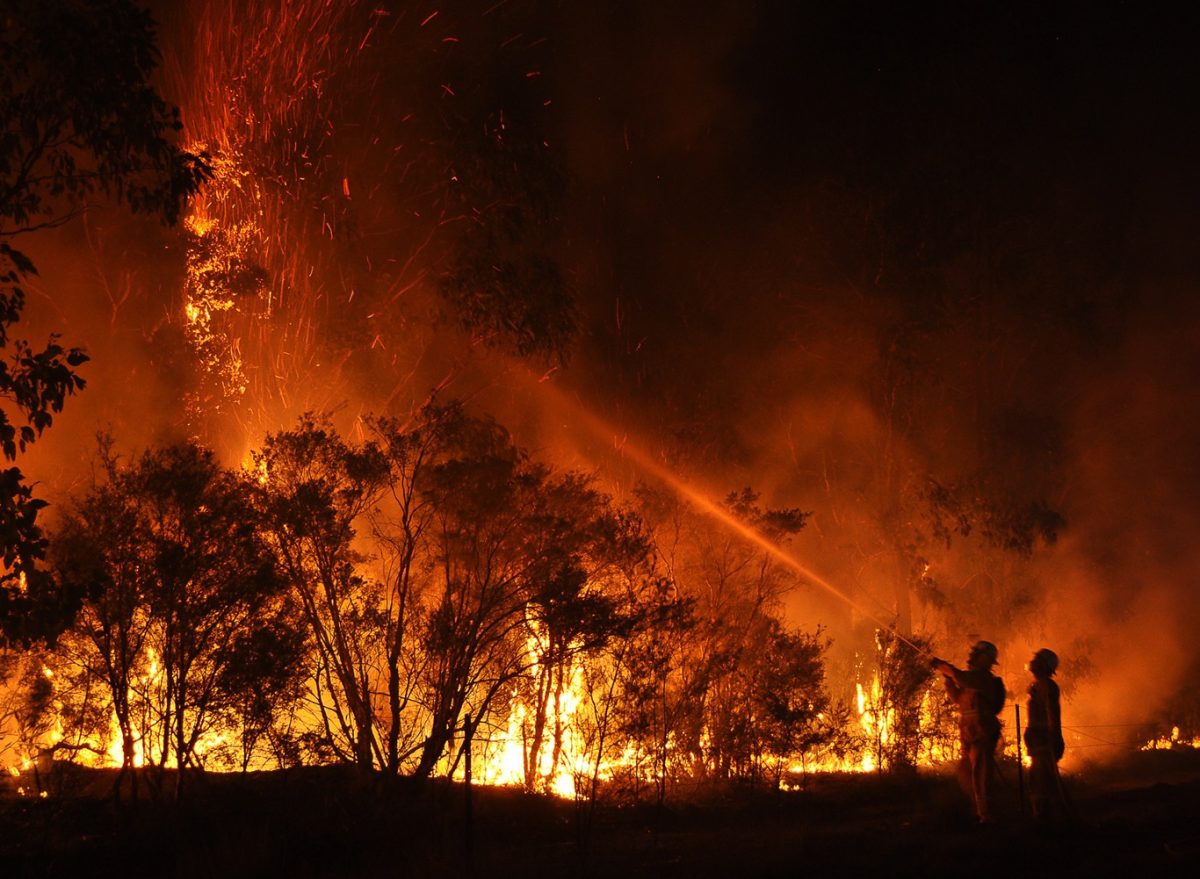The need for bees
Potential savior of all humanity?
This file is licensed under the Creative Commons Attribution-Share Alike 4.0 International license.
Honeybees are more than pollinators; they are a micro-sized terrorism fighting unit.
January 23, 2020
In today’s politically dissonant and chaotic world, the world could use a savior.
Tensions between the U.S. and Iran have never been so alarmingly high. according to the Doomsday Clock, the world is now 100 seconds from nuclear midnight, and bombings, drone strikes, and other automated methods of war are increasingly prevalent with every new technological advent. Carbon dioxide emissions increase exponentially with the start of each new year, and, as noted by the Bulletin of the Atomic Scientists, the only way to “halt the worst effects of climate change” is for the world to “cut net worldwide carbon dioxide emissions to zero by well before the end of the century.”
Humanity is in a nightmarish cycle of ignorance, slowly pulling ourselves over the brink with every nuclear threat made and every gaseous ton of carbon dioxide ejected into the atmosphere. In such trying times, there is but one humble creature who helps to combat both of these intense, complicated problems. This savior is none other than the bee.
At first, this statement may sound completely asinine and unrealistic. Bees only serve to accomplish menial tasks like producing honey and expanding their hives, right? How much else can a bee possibly achieve?
The answer is equal parts surprising and obvious. First is the bee’s ability to pollinate. Mass pollination is a monumental help to combat overexposure of carbon dioxide. Pollination is the transfer of pollen grains from the male anther of a flower to the female stigma in order to create more plants. This process is often unintentional, a result of an animal’s arbitrary perusing of flowers. The pollinators either seek the pollen as a source of protein/nutrition, or they are after the nectar of the flower. Either of these reasons results in an acclamation of pollen dust on the pollinator, who might seek out another flower to repeat the process of gathering food and drink.
After visits to multiple flowers, both male and female, plant reproduction is a common repercussion. Bees excel at this process with their ability to fly, their often fuzzy bodies, which pollen can easily adhere to, and their inherent desire to feed their colony. The more plants developing and repopulating on the planet, the more potentially harmful carbon dioxide can be consumed by them. Climate change, habitat loss, and incessant pesticide use continue to hamper the extent of pollinators such as bees. In layman’s terms, in order to save the planet, society must also save the mighty bees.
There is also a more surprising aspect of bee capabilities: their potential as a widespread, bomb-sniffing force of justice. Bees have another “superpower;” due to their incredible sense of smell and easiness of domestication, bees can be used to detect natural explosive compounds, and by extension, explosive devices. After rigorous testing and study, it was proposed that bees could be used to locate highly specific substances in crowded areas. The bee’s attraction to sugar water (nectar) is used in combination with scent repetition; the bee extends its proboscis to access a mixture of nectar and a chosen target compound, and after being repeatedly exposed to this scent, the bee can recognize it in a variety of environments.
Training bees is not as time-consuming and fruitless as one might think; fifty bees can be trained in only two to three hours, and they can survive up to 48 hours in containment. With the aid of a device to harness it, a bee can be wrangled to identify the location of natural compounds like triacetone triperoxide (TATP), notable for its explosive power and large array of triggers (heat, friction, static electricity, concentrated sulfuric acid, ultraviolet radiation, physical shock). TATP’s ease of use made it an easy choice for terrorists who were building bombs, and it has been documented in terrorist attacks post 2001.
More open methods of bee-based substance detection have been worked on, involving thousands of bees and recording their flight patterns with audio, video, and laser systems. The bee swarm tends to slow down over areas with a high concentration of a selected compound, making it easier to identify potential hiding locations of explosives, methamphetamine laboratories, and cadavers. With thousands of bees, entire mile-long areas can be efficiently scanned for danger.
Bees are very effective at this kind of operation due to their eusocial nature, and they are highly organized and coordinated within their hive. It’s clear that bees are worth more than the honey they produce; they are modern-day superheroes. A lone bee is moderately sufficient in small tasks, but it is when they cooperate in large numbers that they can accomplish incredible feats.
Are we not the same? Humans, when joined together, can save the very planet they inhabit. Earth is not too far gone to be saved. We just need some aid. From the bees.
















































































